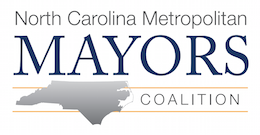Transportation Secretary LaHood Tells Mayors More Federal Support Coming (US Conf of Mayors)
U.S. Department of Transportation Secretary Ray LaHood told the mayors during the January 21 Plenary of The U.S. Conference of Mayors Winter Meeting that last year, he traveled to 66 cities and saw “some amazing projects that are transforming sprawling, struggling 20th century cities into clean, green, accessible hubs of activity where people choose to live and work and start a family.” He said, “We’re taking our clues from you and we want to be absolutely sure that we set the right policies and guidelines for investing federal funds in projects that will enable you to keep doing what you’re doing and do it better, with more federal support.”
“You also want more control over how federal transportation dollars should be spent in your cities,” said LaHood. “Our discretionary TIGER grant program, funded through the Recovery Act, marks the first time that cities can apply directly to (US)DOT for federal highway funds for innovative transportation projects to improve highways, railways, transit, and more.” The USDOT received nearly 1,400 applications from all 50 states vying for a share of $1.5 billion in Recovery funds for transportation projects that show significant economic promise and promote livability and sustainability.
“This is a whole new way of doing business for us — and it’s the model we’ll refine going forward,” said LaHood. “We’re excited about the impact these projects will have on cities that have been clamoring for resources to address a wide variety of residential and commercial transportation needs.”
Discussing the new livability factors for major transit capital projects, LaHood said, “This will open the door to federal assistance for the kinds of transit projects so many of you want downtown — like streetcars and trolleys.” The change will apply to how the Federal Transit Administration (FTA) evaluates major transit projects going forward. In making funding decisions, the FTA will now evaluate the environmental, community and economic development benefits provided by transit projects, as well as the congestion relief benefits from such projects. As part of this initiative, the FTA will immediately rescind budget restrictions issued by the Bush Administration in March of 2005 that focused primarily on how much a project shortened commute times in comparison to its cost.
Speaking to Livable Communities, which is the integration of transportation, housing, land use, economic development, and the environment, LaHood said, “Together, we’re coordinating [with HUD and EPA] investments to give you funds for more projects to make your cities livable and sustainable.” And, he added, “Our Departments have field offices in Chicago, Seattle, and elsewhere that are already working together to identify opportunities and remove obstacles to sustainable development.”
The Secretary also spoke to the $8 billion for high speed rail planning and development funded in the Recovery Act stating, “The high’speed rail program, which reflects President Obama’s vision for the future of transportation in America, is going to help us revitalize domestic manufacturing in this country.” On January 27, The Obama Administration announced that Wisconsin would receive a grant for $810 million for the Milwaukee-to-Madison portion of the corridor, and an additional $12 million will provide for improvements on the line near the Milwaukee airport. Minnesota will be awarded $600,000 to extend the line to the Twin Cities. California will receive $2.25 billion, Florida will be awarded $1.25 billion for the Tampa to Orlando segment, and Illinois will receive $1.1 billion for the Chicago Hub Network from Chicago to St. Louis. Additionally, Washington will receive $590 million, North Carolina was awarded $520 million, and Ohio will receive $400 million for the Cleveland to Cincinnati line.
North Carolina was awarded $520 million, and Ohio will receive $400 million for the Cleveland to Cincinnati line.
Regarding the authorization of the nation’s next surface transportation law, LaHood said, “We’re working with Congress to make sure there’s a lot more flexibility and opportunity for cities, both large and small, to bring federal transportation funds home.”
In introducing LaHood, Conference of Mayors President Burnsville (MN) Mayor Elizabeth B. Kautz said, “If we do this next bill correctly we can make sure that our citizens and businesses have the transportation systems they need to live and compete in the global economy.”
“Clearly, there are challenges before us in accomplishing this vision,” said Kautz. “But please know that mayors stand with you, and will be a formidable partner.”
By Ron Thaniel
February 1, 2010


